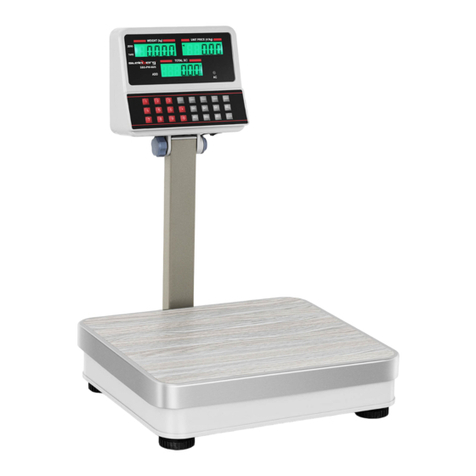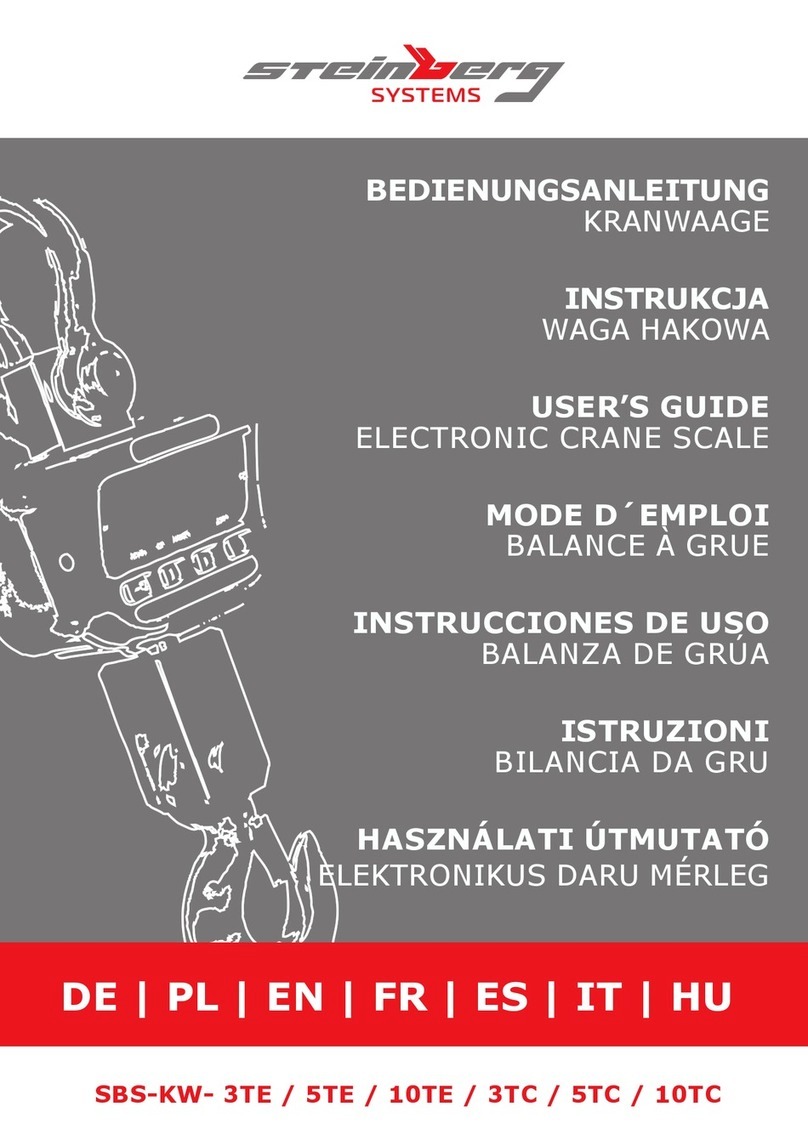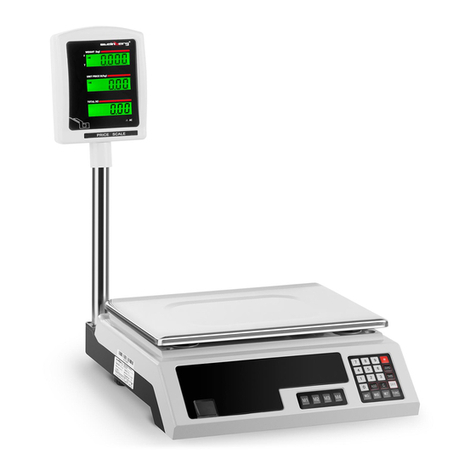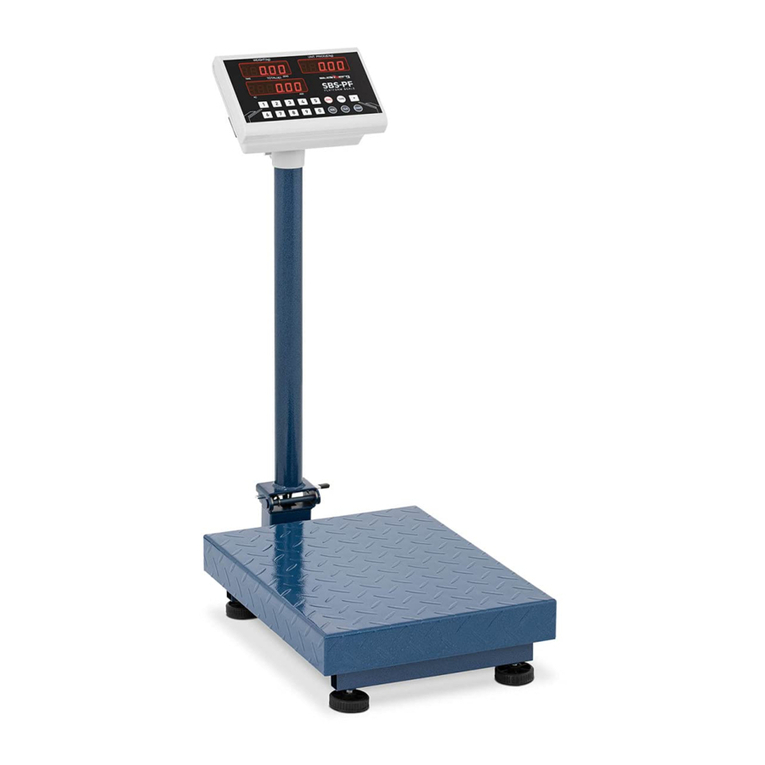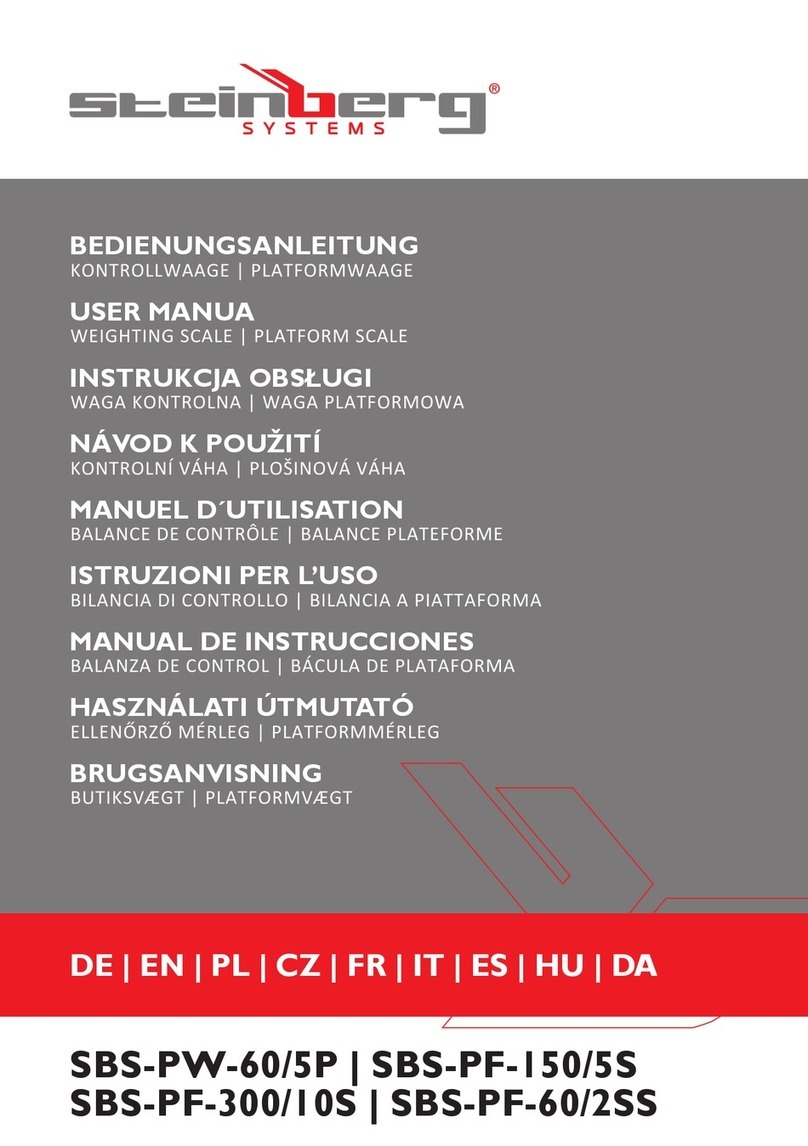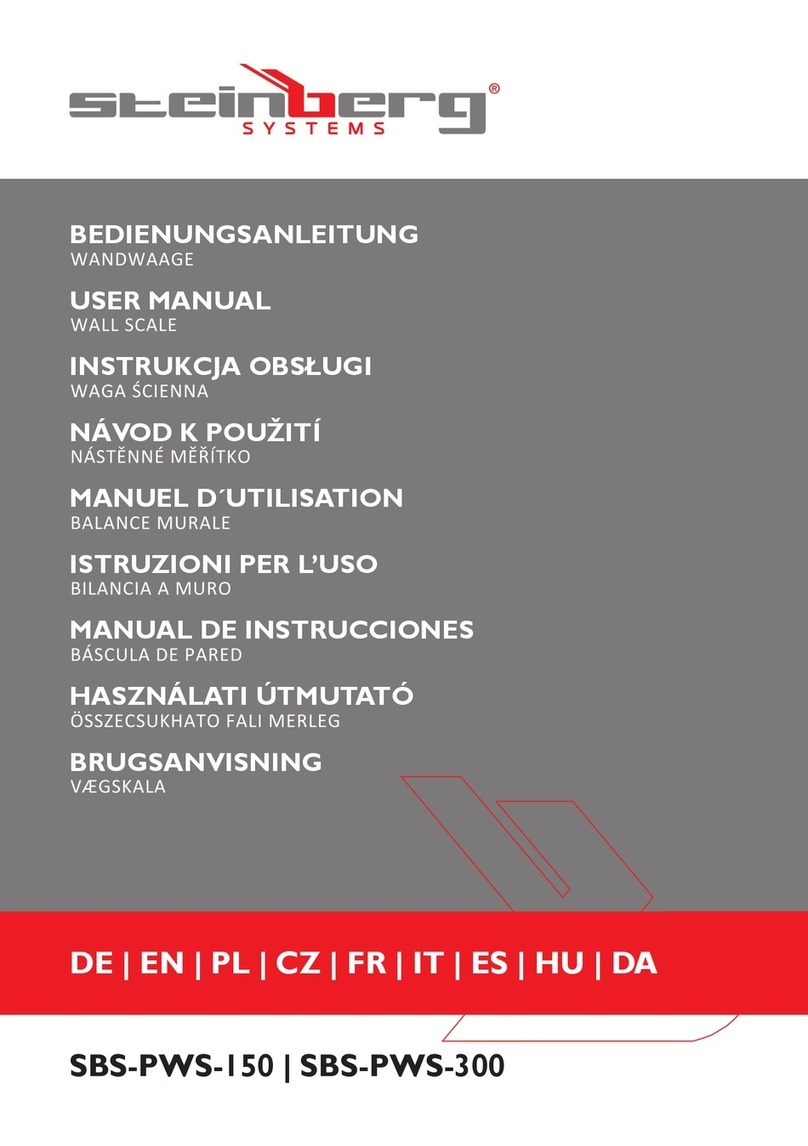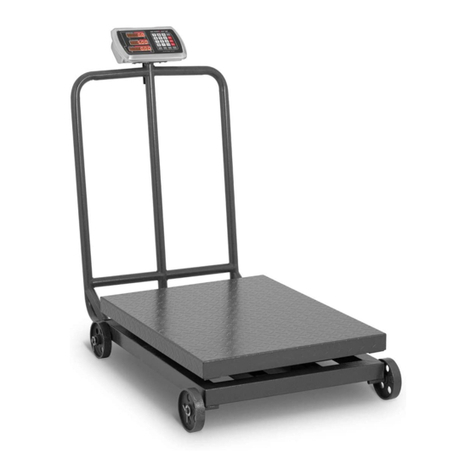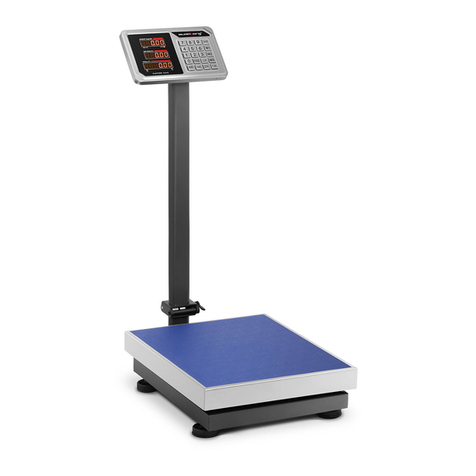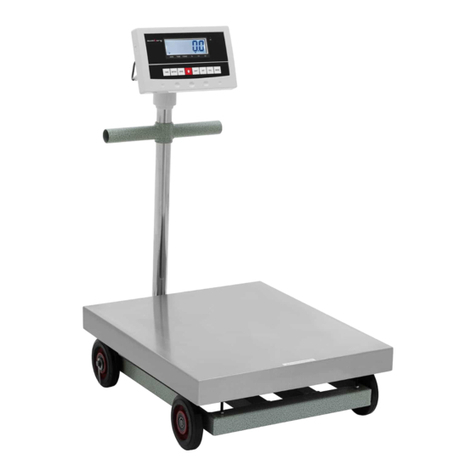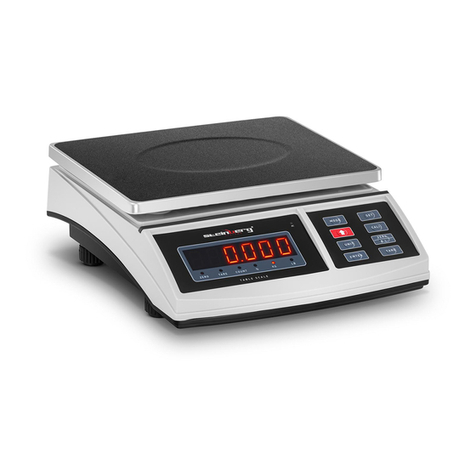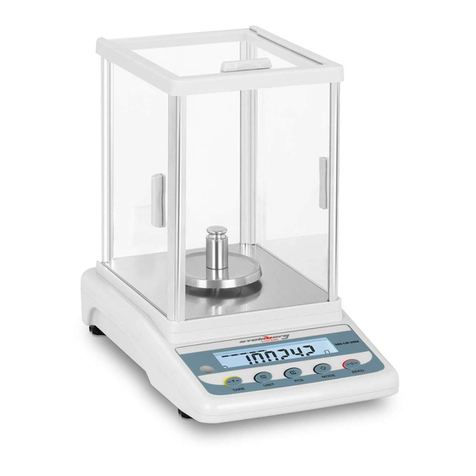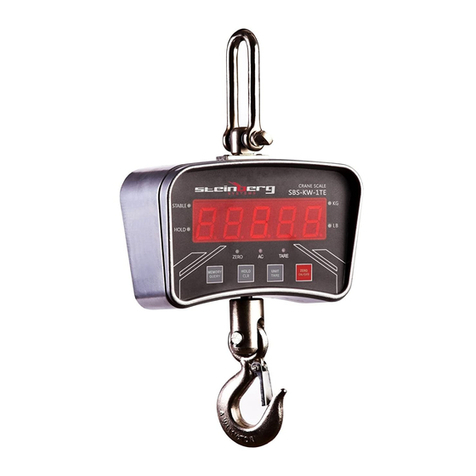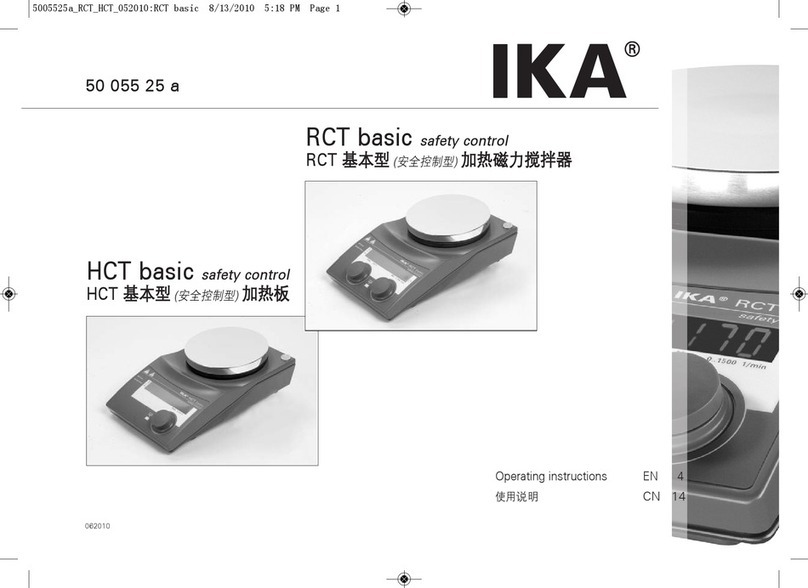
4
a) Es ist nicht gestattet, das Gerät im Zustand der
Drogen oder Medikamenten zu betreiben, wenn das
die Fähigkeit das Gerät zu bedienen, einschränkt.
mit eingeschränkten physischen, sensorischen und
geistigen Fähigkeiten oder ohne entsprechende
Erfahrung und entsprechendes Wissen bedient
werden. Dies ist nur unter Aufsicht einer für die
Einweisung in die Bedienung der Maschine gestattet.
c) Vergewissern Sie sich vor dem Anschließen des
Geräts an eine Stromquelle, dass der Schalter
ausgeschaltet ist.
d) Das Gerät ist kein Spielzeug. Kinder sollten in der
Nähe des Geräts unter Aufsicht stehen, um Unfälle
zu vermeiden.
2.4. SICHERE ANWENDUNG DES GERÄTS
a) Benutzen Sie das Gerät nicht, wenn der EIN-/AUS-
Schalter nicht ordnungsgemäß funktioniert. Geräte,
die nicht über den Schalter gesteuert werden
können, sind gefährlich und müssen repariert
werden.
b) Trennen Sie das Gerät von der Stromversorgung,
bevor Sie mit der Einstellung, Reinigung und Wartung
beginnen. Eine solche vorbeugende Maßnahme
verringert das Risiko einer versehentlichen
Aktivierung des Geräts.
c) Nicht verwendete Werkzeuge sind außerhalb
aufzubewahren, welche weder das Gerät noch die
Anleitung kennen. In den Händen unerfahrener
darstellen.
a) BenutzenSiedasGerätnichtinexplosionsgefährdeten
Bereichen, zum Beispiel in Gegenwart von
brennbaren Flüssigkeiten, Gasen oder Staub. Geräte
können unter Umständen Funken erzeugen, welche
Staub oder Dämpfe entzünden können.
b) Im Falle eines Schadens oder einer Störung sollte
das Gerät sofort ausgeschaltet und dies einer
c) Wenn Sie nicht sicher sind, ob das Gerät
ordnungsgemäß funktioniert, wenden Sie sich an
den Service des Herstellers.
d) Reparaturen dürfen nur vom Service des Herstellers
durchgeführt werden. Führen Sie keine Reparaturen
auf eigene Faust durch!
e) Zum Löschen des Gerätes bei Brand oder Feuer, nur
2)
verwenden.
f) Überprüfen Sie regelmäßig den Zustand der
Sicherheitsinformationsaufkleber. Falls die Aufkleber
unleserlich sind, sollten diese erneuert werden.
g) Bewahren Sie die Gebrauchsanleitung für
den weiteren Gebrauch auf. Sollte das Gerät
an Dritte weitergegeben werden, muss die
Gebrauchsanleitung mit ausgehändigt werden.
h) Verpackungselemente und kleine Montageteile
außerhalb der Reichweite von Kindern aufbewahren.
5
Stellen Sie den Behälter bei Bedarf auf die Waagschale
Drücken Sie während der aktiven
auszuwählen (10, 20, 50, 100, 200, 500, 1000 Stück).
haben, drücken Sie zur Bestätigung die TARE-
während dessen die zuvor gewählte Anzahl von
Wenn der stabile Messwert verschwindet, ist
Stückzählfunktion kann gestartet werden.
verwenden, um die Zählung genauer zu machen.
Durch Drücken der Taste während des Wiegevorgangs
wird der gewichtete Wert an den Computer gesendet.
KALIBRIERUNG
Halten Sie die TARE-Taste 3 Sekunden lang gedrückt,
der Kalibrierung:
• Dauerlast:
Drücken Sie die TARE-Taste erneut, der Wert
wird angezeigt und eine Last dieses Wertes
sollte auf die Waagschale gelegt werden. Auf
Sie die Last und legen Sie ein Gewicht auf die
Waagschale, das dem nächsten angezeigten
Wert entspricht. Nach diesem Vorgang ist die
Kalibrierung abgeschlossen.
• Ausgewählte Last:
drücken Sie die TARE-Taste. Drücken Sie bei
drücken Sie die TARE-Taste. Nachdem Sie die
Sie die gewählte Last auf die Waagschale.
Wenn sich der Messwert stabilisiert hat, ist der
Kalibriervorgang abgeschlossen.
RS-232 ÜBERTRAGUNGSVERFAHREN
Mit dieser Funktion können Sie Messwerte an jedes
Terminal oder jede serielle Schnittstelle übertragen.
Das Gerät verwendet die asynchrone serielle
Simplex-Kommunikation (kann bei Bedarf auf
Duplex umgestellt werden) der elektrischen RS232-
Schnittstelle. Die Datenübertragung erfolgt im ASCII-
Code. Jeder Datensatz hat 10 Bits. Die Informationen
über die einzelnen Bits sind wie folgt:
3.1. GERÄTEBESCHREIBUNG
1. Waagschale
2. Abdeckung
3. Richtwaage
4. RS-232-Schnittstelle
5. I/O-Taste (ON/ OFF)
6. Steckdose
7. Bedienfeld
A. UNIT-Taste
D. TARE-Taste
E. Anzeige
DEDE
d) Halten Sie das Gerät stets in einem einwandfreien
am Gerät und seinen beweglichen Teilen Schäden
vorliegen (defekte Komponenten oder andere
Faktoren, die den sicheren Betrieb der Maschine
beeinträchtigen könnten). Im Falle eines Schadens
muss das Gerät vor Gebrauch in Reparatur gegeben
werden.
e) Halten Sie das Gerät außerhalb der Reichweite von
Kindern.
f) Reparatur und Wartung von Geräten dürfen
Originalersatzteilen durchgeführt werden. Nur
so wird die Sicherheit während der Nutzung
gewährleistet.
g) Um die Funktionsfähigkeit des Gerätes zu
gewährleisten, dürfen die werksmäßig montierten
Abdeckungen oder Schrauben nicht entfernt werden.
h) Das Gerät muss regelmäßig gereinigt werden, damit
sich nicht dauerhaft Schmutz festsetzt.
i) Das Gerät ist kein Spielzeug. Reinigung und Wartung
dürfen nicht von Kindern ohne Aufsicht durch eine
j) Es ist untersagt, in den Aufbau des Geräts
zu ändern.
k) Geräte von Feuer – und Wärmequellen fernhalten.
tara Tara-Funktion aktiv
stable stabiles Lesen Gerät stabil
zero Nullstellungsfunktion
aktiv
Stückzählung Stückzählfunktion aktiv
tola tola Wiegeeinheit: Tola
lb funt
ct karat Wiegeeinheit: Karat
g gram Wiegeeinheit: Gramm
AC Stromversorgung
Das Gerät ist an die
Stromversorgung
angeschlossen
Anzeige - Symbole
3.2. VORBEREITUNG ZUR VERWENDUNG
ARBEIT MIT DEM GERÄT
UNIT Wechsel der Wiegeeinheit:
Um die Wiegeeinheit zu ändern, drücken Sie die
Taste UNIT, nach dem Drücken der Taste ändert sich
das Einheitensymbol in der Anzeige.
TARE Tarieren der Waage:
Stellen Sie einen leeren Behälter auf die Waagschale.
Wenn der Messwert stabil ist, drücken Sie die TARA-
Taste und die Anzeige wird auf Null zurückgesetzt,
das Symbol erscheint auf der Anzeige:
• wenn der Wert kleiner als ± 5 % des Skalenwertes
ist - ZERO,
• wenn der Wert über ± 5 % des Skalenwertes
liegt - TARA.
2
1
3
4 5 6
HINWEIS!Kinder und Unbeteiligte müssen bei der
Arbeit mit diesem Gerät gesichert werden.
3. NUTZUNGSBEDINGUNGEN
Das Gerät ist dazu bestimmt, die Masse der auf der Schale
platzierten Elemente zu messen.
Achtung! Das Gerät kann nicht für gewerbliche Zwecke
verwendet werden.
Für alle Schäden bei nicht sachgemäßer Verwendung
haftet allein der Betreiber.
Die Waage sollte immer in einem Umfeld benutzt werden,
welches frei von exzessiven Wind-, Korrosions-, Vibrations-,
Temperatur – und Feuchtigkeitsverhältnissen ist. Stellen Sie
die Waage auf eine stabile und gerade Fläche. Vermeiden Sie
direktem Luftzug, direkter Sonneneinstrahlung und hoher
Temperatur ausgesetzt wird.
ACHTUNG!Obwohl das Gerät in Hinblick
auf Sicherheit entworfen wurde und über
Schutzmechanismen sowie zusätzlicher
Sicherheitselemente verfügt, besteht bei
der Bedienung eine geringe Unfall- oder
Verletzungsgefahr. Es wird empfohlen, bei der
Nutzung Vorsicht und Vernunft walten zu lassen.
1
3
2
7
bit1 bit2 bit3 bit4 bit5 bit6 bit7 bit8 bit9 bit10
BIT1: Startbit
BIT2 - BIT9: Datenbit
BIT10: Stoppbit
ÜBERTRAGUNGSDATENFORMAT
• Bit Nr. 1 - 2: Funktionsweise:
» CT - Zählen
Rev. 18.03.2022
Rev. 18.03.2022

